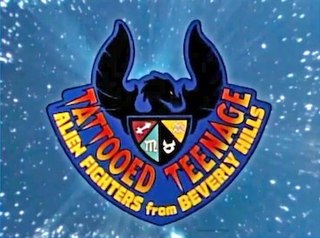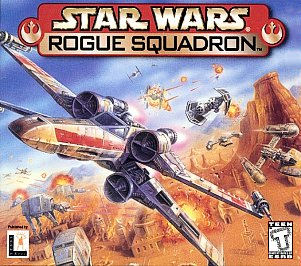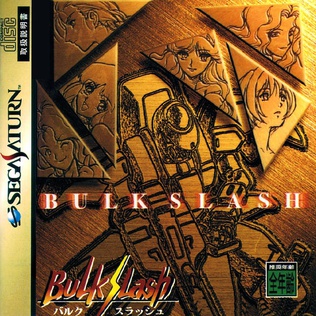
Simon the Sorcerer is a 1993 point-and-click adventure game developed and published by Adventure Soft, for Amiga and MS-DOS. The game's story focuses on a boy named Simon who is transported into a parallel universe of magic and monsters, where he embarks on a mission to become a wizard and rescue another from an evil sorcerer. The game's setting was inspired by the novels of the Discworld series, and incorporates parodies on fantasy novels and fairy tales, such as The Lord of the Rings and Jack and the Beanstalk. The lead character's design was inspired by that of the fictional British television character Blackadder, with the character voiced by Chris Barrie in the CD re-release.

Escape Velocity is a single-player role-playing space trading and combat video game series first introduced in 1996 by Ambrosia Software for the Macintosh. Two other similar games based on the original, EV Override and Escape Velocity Nova, followed in 1998 and 2002 respectively, the latter of which is also available on Microsoft Windows. In addition there is a trading card game available based on the storyline of the EV Nova universe.

Script Creation Utility for Maniac Mansion Virtual Machine (ScummVM) is a set of game engine recreations. Originally designed to play LucasArts adventure games that use the SCUMM system, it also supports a variety of non-SCUMM games by companies like Revolution Software and Adventure Soft. It was originally written by Ludvig Strigeus. ScummVM is free software that is released under the terms of the GNU General Public License.
Adventure Soft is a British video game developer and publisher established by Mike Woodroffe, initially as an importer and reseller of Adventure International games as Adventure International (UK), and later using the names Horror Soft, Adventuresoft UK and Headfirst Productions. The firm operates out of Sutton Coldfield, and is best known for the Simon the Sorcerer series of games.

Metroid: Zero Mission is a 2004 action-adventure game developed and published by Nintendo for the Game Boy Advance. It is a remake of the original Metroid (1986), and retells the story with updated visuals and gameplay.

4X is a subgenre of strategy-based computer and board games, and includes both turn-based and real-time strategy titles. The gameplay generally involves building an empire. Emphasis is placed upon economic and technological development, as well as a range of military and non-military routes to supremacy.
Star Wars: Rogue Squadron is a series of Star Wars action video games jointly developed by LucasArts and Factor 5 and published by LucasArts for Nintendo consoles. Aspyr has expressed interest in bringing the series to the Nintendo Switch.

Star Wars Rogue Squadron II: Rogue Leader is a flight action game co-developed by Factor 5 and LucasArts and is the second of the Rogue Squadron series. It was published by LucasArts and released as a launch title for the GameCube in North America on November 18, 2001, and Europe on May 3, 2002. Set in the fictional Star Wars galaxy, the game spans all three original trilogy Star Wars films. The player controls either Luke Skywalker or Wedge Antilles. As the game progresses, Skywalker, Antilles and the Rebel Alliance fight the Galactic Empire in ten missions across various planets.

Star Wars: Rebel Assault II: The Hidden Empire is a 1995 video game developed by LucasArts. It is the sequel to Star Wars: Rebel Assault, set in the Star Wars expanded universe. It is played as a rail shooter; the player proceeds down predetermined paths, but has the ability to control aiming, shooting, and dodging. The player character, Rookie One, pilots ships such as a YT-1300 Corellian Transport, a B-wing, and a Y-wing, and encounters new enemy ships, including TIE Interceptors. They uncover, and eventually disable production of, a new TIE variant known as the TIE Phantom, which has the ability to cloak.

Galactic Civilizations II: Dread Lords is a 4X turn-based strategy by Stardock for Microsoft Windows. It is the sequel to the 2003 game, Galactic Civilizations, and was released at retail and on Stardock's online subscription service, TotalGaming.net, on February 21, 2006. An expansion, Dark Avatar, was released in February 2007. A second expansion, Twilight of the Arnor, was released in April 2008.

Tattooed Teenage Alien Fighters from Beverly Hills (TTAFBH), is an American children's television series produced by DIC Entertainment. It aired on USA Cartoon Express, a kids' block on the USA Network, from 1994 to 1995. Reruns of the show later aired during the Cookie Jar Toons block on This TV from 2011 to 2012. The series is about four teens who are picked by an alien to fight off monsters, while also finding the time to overcome problems at school.

Star Wars: Rogue Squadron is an arcade-style flight action game co-developed by Factor 5 and LucasArts. The first of three games in the Rogue Squadron series, it was published by LucasArts and Nintendo and released for Microsoft Windows and Nintendo 64 in December 1998. The game's story was influenced by the Star Wars: X-wing – Rogue Squadron comics and is set in the fictional Star Wars galaxy, taking place primarily between events in the films Star Wars and The Empire Strikes Back. The player controls Luke Skywalker, commander of the elite X-wing pilots known as Rogue Squadron. As the game progresses, Skywalker and Rogue Squadron fight the Galactic Empire in 16 missions across various planets.

Cybermorph is a shooter video game developed by Attention to Detail (ATD) and published by Atari Corporation as the pack-in game for the Atari Jaguar in North America on November 23, 1993, and Europe on June 1994. It was also distributed in Japan by Mumin Corporation as a stand-alone release. Taking place in a galactic war, the player pilots the morphing attack fighter TransmoGriffon to battle against the Pernitia empire, who have conquered planets on multiple sectors and whose regenerative robotic technology become entrenched into the planets. The player is tasked with recapturing critical pods, while facing against enemies and bosses, across five sectors in order to defeat the empire.

Xexex, released as Orius in North America, is a 1991 side-scrolling shoot 'em up arcade game by Konami. It draws on Irem's R-Type and Konami's other shoot 'em up Gradius, while adding the tentacle mechanics of Irem's other shoot 'em up XMultiply. In the game, players take control of the Flintlock space fighter in a mission to rescue Princess Irene La Tias of Planet E-Square, who has been captured by the evil galactic warlord Klaus Pachelbel.

Simon the Sorcerer 3D, is an adventure game released by Adventure Soft on 13 April 2002 for Microsoft Windows. It is the third game in the Simon the Sorcerer series.

Metroid is an action-adventure game developed and published by Nintendo. The first installment in the Metroid series, it was originally released in Japan for the Family Computer Disk System in August 1986. North America received a release in August 1987 on the Nintendo Entertainment System in the Game Pak ROM cartridge format, with the European release following in January 1988. Set on the planet Zebes, the story follows Samus Aran as she attempts to retrieve the parasitic Metroid organisms that were stolen by Space Pirates, who plan to replicate the Metroids by exposing them to beta rays and then use them as biological weapons to destroy Samus and all who oppose them.

Galactic Command is the third series of space exploration video games developed by 3000AD, Inc.

Spore Galactic Adventures is an expansion pack for the multigenre game Spore, developed by Maxis Emeryville and published by Electronic Arts. The US version of the game was released on June 23, 2009. The European version was released on June 26, 2009.

Planet of the Apes is a 2001 action-adventure video game in the Planet of the Apes franchise. The franchise's first video game, it was released as a tie-in to the 2001 Planet of the Apes film, though the plot is inspired by Pierre Boulle's 1963 novel and the 1968 film adaptation. Fox Interactive contracted Visiware to develop the game for Windows and PlayStation and partnered with Ubi Soft as co-publisher. Torus Games developed a Game Boy Advance and Game Boy Color versions, which are based on the 1968 film and its 1970 sequel.

Bulk Slash is a third-person action mecha simulation video game developed by CAProduction and published by Hudson Soft for the Sega Saturn in Japan on July 11, 1997. Taking place on a futuristic science fiction setting, where military chief Alois Gardona and discriminated inhabitants of the fictional planet Blau plots a coup d'état against their oppressors, players assume the role of SDF fighter pilot Cress Dawley in order to win the war against Gardona and his army. The game has been met with mostly positive reception from video game magazines and online publications alike since its release; critics praised various aspects of the title such as presentation, soundtrack, gameplay, replay value and graphics.


















